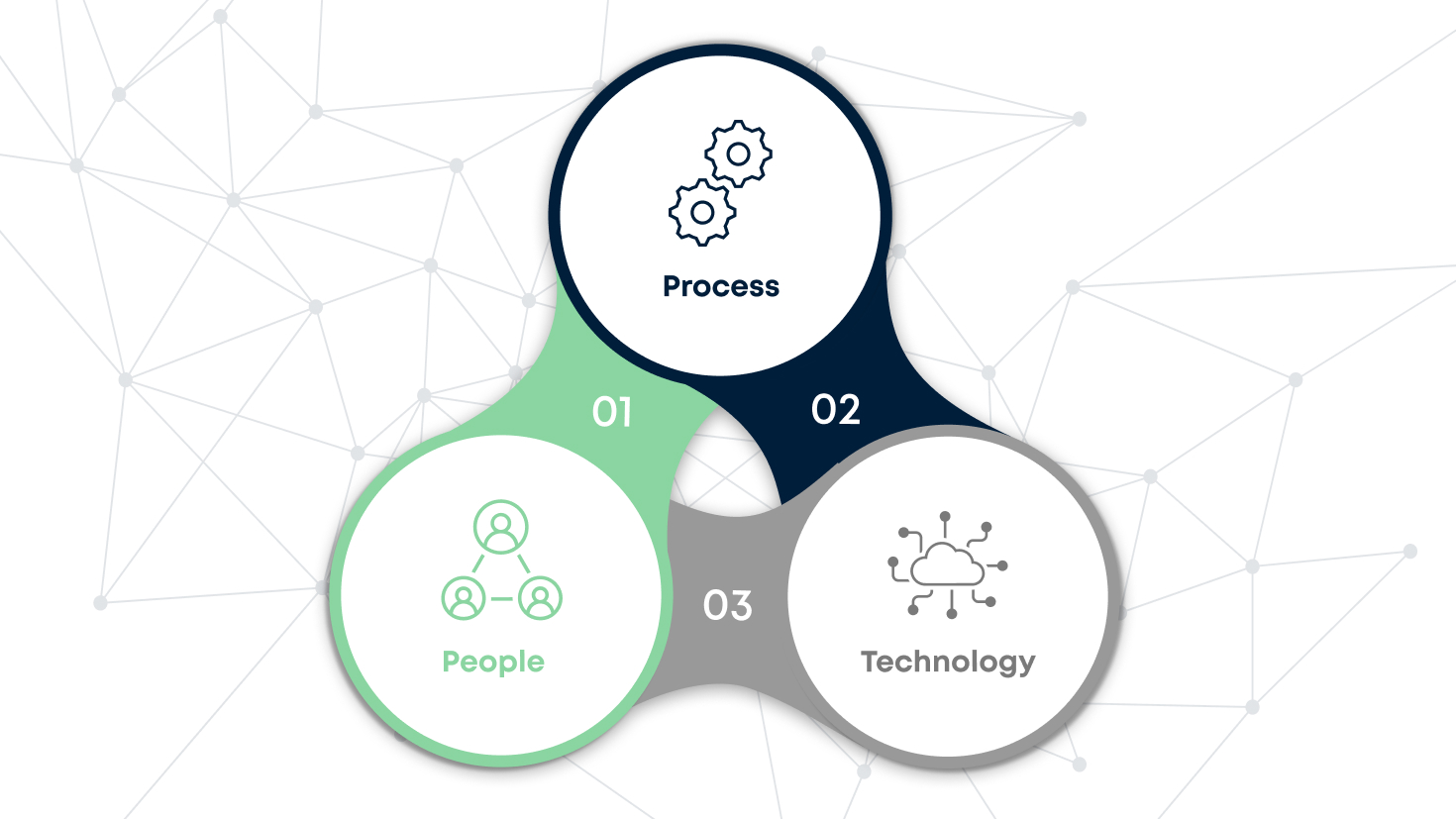When a new problem emerges, business leaders often turn to technology for a solution. Software platforms offer scalable, and often simplified, solutions for key business problems. However, relying technology solutions can also lead to unforeseen complications and inefficiencies for leaders which are often overlooked.
Leaders often fall into the trap of thinking that a new tool alone will solve their problems, leading to ineffective solutions that fail to address underlying issues. Without effective change management and identification of required steps for implementation, a new tool can lead to frustration among employees due to lack of training or ill-defined purpose. Conversely, senior management can become frustrated with team members for not using tool investments correctly, creating a cycle of inefficiency and dissatisfaction.
Relying solely on technology is the equivalent of constructing a skyscraper without a solid foundation. Even the best tool can deliver ineffective outcomes and waste resources if not used consistently and correctly. This is why having knowledgeable people and well-defined processes is crucial – effective people and process helps eliminate blind spots, unlocking the true potential of any technological solution.
People, Process, Technology | The PPT Framework
So how do teams ensure they build solid foundations? The People, Process, Technology (PPT) framework is a management model that emphasizes the integration of all three critical elements to achieve organizational effectiveness and efficiency. The framework emerged from the need to understand and address the limitations and interactions between these components in various business environments.
PPT gained prominence as project managers began to realize that technology alone was insufficient for solving complex problems. The reality that project support for people and processes must complement technological integrations led to the development of a holistic approach, underlining that to implement successful solutions, organizations must drive all three elements together. If one aspect is out of balance, it will affect the overall outcome and effectiveness of any given solution.
From a practical standpoint, the PPT framework encourages driving synergy between all three elements – People, Processes and Technology – to achieve effective management outcomes. So let’s look at each in further detail:

1. People | The Heart of the Solution
People refers to your organization’s employees, stakeholders and managers – in other words, those teams executing work and driving projects.
Well-trained staff aligned with business objectives are crucial to the success of implementing any management solution. With the right training, skills, and experience, the right people can identify blind spots and play a crucial role in implementing any tool across large operating footprints. Conversely, a lack of understanding of objectives or failure to follow processes can render any solution ineffective and expose organizations to compounding risks. Investing time in training and onboarding employees is arguably the most important step when implementing a technological solution.
In short, gaining employee buy-in when introducing new software or system is essential, and is often the most important factor behind success or failure for any project.
2. Process | Driving Scalability
Processes, defined by policies and standards, are the procedures that dictate what good looks like – providing clarity on what needs to be done and why. Understanding effective process is crucial for employees, as it helps all of us align our actions with wider organizational goals.
Well defined processes are essential in guiding people and driving the effective use of technology. They act as a bridge, ensuring seamless coordination and efficient operation of any solution – supporting scalability by compensating for human blind spots and reducing the risk of errors and oversights. By guiding employees’ use of technology, well defined processes play a crucial role in driving robust information flows in and out of specific tools.
Clearly defining and communicating management processes before introducing technological solutions is crucial to maximizing return on investment.
3. Technology | Tools for Empowerment
Technology encompasses the tools and solutions used to solve problems and streamline tasks within an organization. Solutions are designed to aid people in their work, enabling greater productivity by helping gather, organize, and analyze data.
Effective solutions automate routine tasks, freeing up time for employees to focus on strategic activities. In this sense, technology is a complement to human effort – enhancing productivity and providing critical insights to make informed decisions and take appropriate actions.
The effectiveness of technology relies heavily on how well it is used. Employees need to understand the capabilities and limitations of the tools they use and navigate them skillfully. Ongoing training and well-defined processes are essential to ensure correct use, avoid inefficiencies, missed opportunities, and security vulnerabilities.
The Human Element & Scalability
While onboarding, training, and robust management processes require effort to put in place, once these key elements are any software solution will be better placed to help your teams manage their data – or emerging challenges effectively. The success of any technological implementation will always depend on the human element—skilled, knowledgeable individuals who can lead on the use of tools effectively and consistently.
At Human Risks, we prioritize this approach by working closely with our customers to ensure comprehensive onboarding and continual development processes are in place around our solution at all times. By focusing on enabling people, driving effective process and implementing best practice software together, any team can scale their management framework to stay ahead of emerging threats and challenges.
No matter the solution or platform you use – technology requires support from well-trained individuals and clear, structured processes.
All three legs need to remain balanced to ensure initial stability and long term success. By keeping this in mind from the outset for any implementation, you have the best chance to realize an effective return on investment and long term business outcomes.
Interested in Learning More About How Human Risks?
Human Risks works with organisations globally to enable security teams and reinforce operational resilience. Reach out to the team for a demo – and subscribe for future updates to learn more about how we’re working with organisations to make security risk management smarter.


